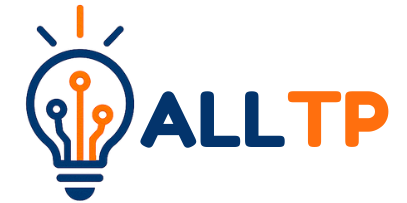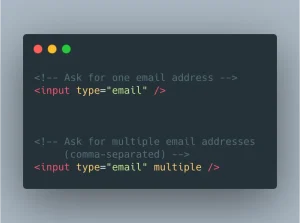In today’s fast-changing world, digital literacy is a core life skill, as essential as reading, writing, and math. But it’s more than just knowing how to use a computer. It’s about thinking critically, communicating clearly, and creating responsibly in digital spaces. As economies move toward automation and technology, the need for digitally fluent citizens is growing fast.
In schools, hybrid learning and digital tools are now the norm. In the workplace, even basic jobs require tech skills.
This shift calls for early action. Teaching coding to kids builds logic, creativity, and confidence, preparing them for the future. School directors must act now to ensure every child, regardless of background, gains access to digital skills. Programs like All Things Programming offer a valuable starting point, providing practical, kid-friendly coding education designed to empower the next generation.
Digital literacy is not a side project. It should be woven into every part of the school, from the curriculum to teacher training and infrastructure. The future belongs to students who are confident in digital spaces, and it begins with school leaders who prioritize it today.
The Expanding Definition of Literacy in the 21st Century
For generations, literacy referred to the ability to read, write, and comprehend printed text. While these foundational skills remain vital, the 21st century has expanded the definition of what it means to be “literate.” Today, students must also navigate digital environments with confidence and critical thinking.
Digital literacy now includes the ability to:
- Decode multimedia content (videos, infographics, podcasts)
- Evaluate online sources for credibility and bias
- Communicate effectively using emails, social media, and collaborative tools
- Participate safely and ethically in digital communities
The difference between traditional and digital literacy is not about replacement; it’s about integration:
- Traditional literacy builds core skills in reading and writing.
- Digital literacy adds the ability to analyze data, interpret visual media, and collaborate in digital spaces.
- Together, they form a complete literacy model for today’s learners.
Digital fluency is essential, not optional:
- It’s the ability to choose the right tools, adapt quickly, and use technology creatively and responsibly.
- These are not just tech skills; they are life skills required in nearly every job, civic duty, and daily task.
School directors play a critical role in leading this shift:
- They must champion curriculum transformation that embeds digital literacy across all subjects and grade levels.
- This leadership prepares students for a future where adaptability, critical thinking, and digital confidence define success.
Digital Literacy as a Workforce and Life Skill
In today’s tech-driven world, digital literacy is no longer optional. According to the 2024 World Economic Forum, over 90% of future jobs will require some level of digital skill, from managing cloud platforms to using AI for routine tasks. Even roles outside the tech industry now depend on digital know-how, from farmers using mobile apps to health workers handling electronic records.
But it’s not just about employment. Digital literacy builds responsible citizens who can navigate misinformation, protect their data, and use technology to express their ideas and values. These are essential life skills in a connected world.
School directors must integrate digital literacy across all subjects and invest in both teacher development and student access. Through collaborations, training, and leadership, schools can ensure that students are prepared for both the workforce and life online.
As coding Kenya becomes a national priority, edtechs like All Things Programming have beginner-friendly coding initiatives that can help educators and students gain real digital skills and confidence, regardless of their background or location.
The goal isn’t just digital survival. It’s digital empowerment.
Equity and Access: Bridging the Digital Divide
Digital literacy cannot be achieved without tackling the unequal access to technology that exists in many school communities. While some students explore digital tools with ease, others are left behind, not due to lack of ability, but because they lack the basic tools to engage.
The digital divide is fueled by disparities in:
- Access to reliable devices like laptops or tablets
- Internet connectivity at home and school
- Exposure to digitally skilled and confident educators
This gap threatens to widen existing educational inequalities, especially in underserved rural and urban areas.
Schools must become agents of digital equity by:
- Prioritizing access to devices, high-speed internet, and inclusive digital platforms
- Creating supportive learning environments where all students can thrive, regardless of their background
- Ensuring equity in digital resource distribution and support
But infrastructure alone isn’t enough. School leaders must also focus on:
- Ongoing teacher training to build tech confidence and instructional impact
- Providing IT support and digital content that is accessible and inclusive
- Strategic planning on how digital tools are used, not just what tools are bought
Forward-thinking school directors are funding and sustaining digital inclusion by:
- Forming partnerships with local businesses, NGOs, and tech firms
- Applying for government or private education grants
- Launching school-community fundraising initiatives
- Leveraging national or regional digital infrastructure programs
By bridging the digital divide, school leaders do more than modernize classrooms,
They level the playing field and expand opportunity for every student.
Professional Development and Teacher Empowerment
No matter how advanced the technology or well-funded the infrastructure, digital transformation in schools will fall short without skilled and confident teachers at the helm. That’s why teacher training is non-negotiable. When educators are equipped with both the technical skills and pedagogical strategies to integrate technology effectively, digital literacy becomes a natural part of learning, not an afterthought.
Many teachers today still feel overwhelmed by digital tools, unsure how to align them with lesson objectives or manage classroom tech use responsibly. To overcome this, school directors must invest in continuous professional development (CPD) that goes beyond one-off workshops or surface-level tutorials. Instead, effective CPD should be embedded, collaborative, and hands-on, enabling teachers to experiment, reflect, and refine their practice with support.
Successful models include:
- Peer-led workshops, where teachers share tech integration strategies from their own classrooms.
- Lesson co-planning and co-teaching, where tech-savvy educators model practical use of digital tools.
- Micro-credentialing and online CPD platforms, which allow teachers to upskill at their own pace in areas like digital assessment, blended learning, or coding basics.
Beyond training, school leaders must recognize and support digital leadership within their staff. Cultivating a team of tech mentors or ICT champions, teachers who lead by example and support their peers, creates a culture of shared innovation. These internal leaders serve as a bridge between vision and execution, making tech adoption less intimidating and more sustainable.
Empowered teachers are the backbone of any successful digital literacy initiative. When school directors prioritize their development, they unlock not only digital competence but also greater creativity, collaboration, and confidence throughout the school community. As highlighted in Harvard Graduate School of Education’s research, strong teacher leadership plays a critical role in long-term technology success.
Global Examples: What Effective Leadership Looks Like
Across the world, school leaders are proving that digital transformation starts with bold, informed leadership. In countries where digital literacy has flourished, a common factor is clear: headteachers and school directors take proactive ownership of the change process.
Finland: Local Leadership, National Vision
- The Finnish National Curriculum lists digital competence as one of seven core transversal skills.
- Success lies not just in policy, but in how school principals localize implementation.
- Finnish school leaders:
- Allocate funding for teacher-led innovation
- Encourage collaborative tech experimentation
- Build digital project-based learning into the school calendar
- Outcome: Students don’t just use tech, they think critically in digital environments.
Singapore: Principals as ICT Enablers
- The Ministry of Education’s EdTech Masterplan embeds digital learning in every classroom.
- School directors are trained to:
- Act as “ICT enablers”, not just managers
- Assess school readiness and develop custom tech plans
- Lead digital transformation teams within the school
- Many schools implement:
- Digital portfolios for student work
- Coding in math and science
- Partnerships with tech companies for hands-on learning experiences
UK & Ireland: Recognizing Digital Leadership
- Initiatives like the Digital Schools Awards spotlight schools excelling in digital innovation.
- Common leadership practices in winning schools include:
- Prioritizing staff training and support
- Involving students in decision-making about tech use
- Aligning digital tools with long-term learning outcomes
When school directors step up as digital champions, they transform policy into practice.
Leadership is not about simply enforcing change; it’s about empowering people, piloting ideas, and learning with your team every step of the way.
Policy and Strategic Vision
Digital literacy cannot succeed in isolation. It must be part of a broader, coherent vision that connects school efforts with national priorities. School directors are central to this alignment, ensuring their schools don’t just adapt to digital change but help lead it.
Many ministries of education have developed national ICT policies and digital competence frameworks. But these only become effective when school leaders translate them into clear, school-based strategies. That includes setting measurable digital goals, integrating tech into school improvement plans, and aligning digital tools with core school values.
To amplify impact, school directors must collaborate beyond the school. Strategic partnerships with ministries, NGOs, and tech firms can unlock resources like funding, training, infrastructure, and mentorship. For instance:
- A partnership with an edtech company may enable pilot testing of digital tools.
- Working with a nonprofit can support inclusive tech access or girls in ICT programs.
School directors also bring grassroots insights to national conversations. Their real-world experience can:
- Inform policy decisions
- Identify implementation gaps
- Showcase school-level innovations for a national scale
When directors take part in advisory boards, forums, or school networks, they become key voices in shaping education reform.
The Bottom Line:
A strong national vision needs strong school-level leadership. When directors align local action with national goals and build cross-sector alliances, they don’t just implement change, they drive it.
Research-Backed Models of Digital Literacy Integration
While enthusiasm for digital literacy is growing, effective implementation must be rooted in evidence-based practices. Fortunately, a growing body of academic research offers clear guidance on how schools can integrate digital skills in meaningful, pedagogically sound ways. For school directors, understanding and applying these models is key to building programs that are not only innovative but also impactful.
One leading resource is the University of Rhode Island’s Media Education Lab, a research hub dedicated to advancing digital and media literacy through education and outreach. Their work highlights how digital literacy goes beyond technical skills, emphasizing critical thinking, ethical reasoning, media analysis, and the ability to create digital content. Their approach is particularly valuable because it spans all education levels and offers practical frameworks that school leaders can adapt for their own contexts.
Among the Lab’s key recommendations:
- Integrate digital literacy across the curriculum, not just in ICT or computer science classes.
- Prioritize media literacy, teaching students to evaluate the credibility, bias, and intent behind digital messages.
- Empower students as creators, encouraging them to produce videos, blogs, podcasts, or infographics to express ideas and analyze complex issues.
- Provide teacher training rooted in pedagogy, helping educators facilitate discussions around online identity, misinformation, and digital ethics.
These practices align with what research consistently shows: when students engage in active, inquiry-based digital projects, they not only improve their tech skills but also deepen their understanding of content, strengthen their communication abilities, and build confidence as learners.
By grounding schoolwide digital strategies in such proven approaches, directors can ensure that their programs are not only aligned with future workforce demands but also with the deeper mission of education, to develop thoughtful, responsible, and engaged citizens.
To conclude, School directors are at the heart of education’s digital shift. By setting clear goals, supporting teachers, and ensuring access for all, they turn vision into real classroom change. The future of learning depends on bold, informed leadership.
Get started today with All Things Programming, your go-to resource for coding for beginners and practical tools to build a digitally confident school.




